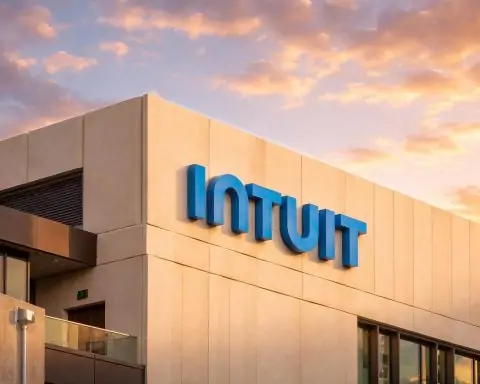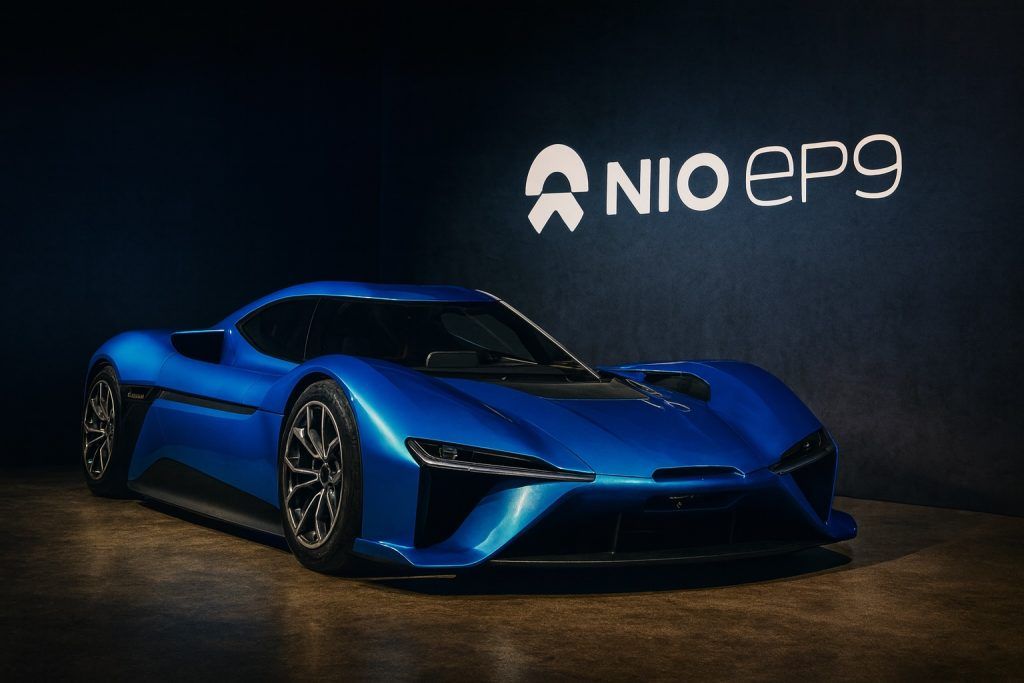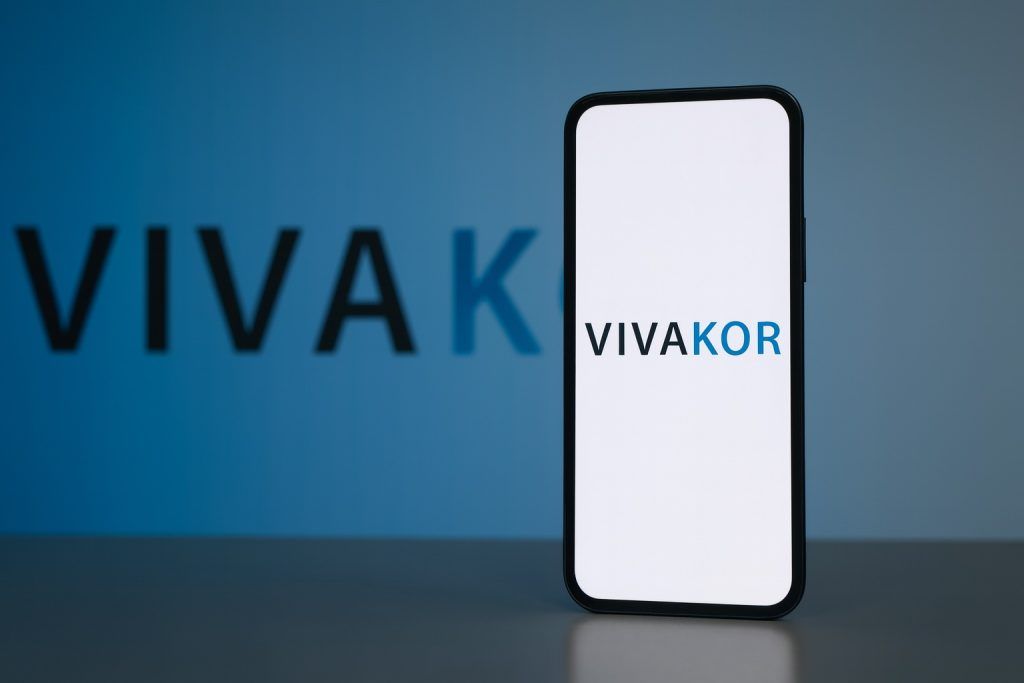- Stock Price Surge: MIRA Pharmaceuticals (NASDAQ: MIRA) saw its stock explode in value after a breakthrough announcement. Shares closed at $1.32 on Wednesday (+0.76% during regular trade) [1], then jumped ~69% to $2.23 after-hours that evening [2]. In pre-market trading on Oct. 16, the rally intensified – MIRA more than doubled to around $2.74 (+107%) as of early morning [3], reflecting frenzied investor demand.
- Breakthrough Drug News: The catalyst was new preclinical data for MIRA’s lead compound, Mira-55. The company revealed that oral Mira-55 outperformed injected morphine in an animal study of chronic inflammatory pain [4]. Mira-55 fully normalized pain levels and sharply reduced inflammation, whereas morphine only partially eased swelling [5]. This marks a significant milestone for non-opioid pain therapeutics, given morphine’s status as a gold-standard painkiller.
- Industry Impact: MIRA’s findings underscore the potential of cannabinoid-based medicine in pain management. Mira-55 is a non-psychotropic marijuana analog that targets CB2 receptors (linked to anti-inflammatory effects) without the high of THC. The company is positioning it for the $70 billion non-opioid pain market [6]. Executives say the drug could deliver morphine-level relief “without the baggage of addiction, sedation, or THC-like effects,” making it an ideal candidate for large unmet needs [7].
- Company Plans: Buoyed by the data, MIRA is preparing an Investigational New Drug (IND) application to start human trials in chronic inflammatory pain [8]. The firm, based in Florida, has been building a pain treatment franchise – including Ketamir-2 (a next-gen ketamine analog for neuropathic pain) which recently cleared an FDA IND for Phase 2 trials [9]. MIRA also expanded beyond pain this quarter by acquiring SKNY Pharmaceuticals, adding an obesity/smoking-cessation drug to its pipeline and $5 million in new assets [10].
- Investor Sentiment: The dramatic overnight surge in MIRA’s stock was amplified by retail traders. Social media buzz hit fever pitch – message volume spiked ~7,000% on Stocktwits, where sentiment is “extremely bullish” [11]. Some users hailed Mira-55 as a potential “blockbuster drug,” speculating that such results could attract major pharma partners or even FDA fast-track status [12]. However, seasoned analysts urge caution: these are early preclinical results, and “translational outcomes remain uncertain until human studies commence” [13].
- Analyst Views & Forecasts: Wall Street coverage of MIRA is scant but split. MarketBeat reports a lone analyst rating of “Sell” on the stock [14], reflecting skepticism about the company’s prospects. Yet other small-cap analysts issued extremely bullish targets earlier: Investing.com notes a 2-analyst average price target of about $10.38 (with a high estimate of $17.75) – implying huge upside from prior levels [15]. This disparity highlights the uncertainty around MIRA. The stock had been relatively quiet in 2025 (up ~16% year-to-date before this week [16]), but the morphine-beating news has clearly changed the narrative.
- What’s Next: All eyes are now on MIRA’s next steps and milestones. The company’s Q3 earnings report due November 11 will shed light on its cash runway and R&D progress (MIRA is pre-revenue, with a Q2 net loss of $0.09 per share – smaller than expected [17]). Any updates on the Mira-55 IND filing or fast-track designation, as well as advancement of Ketamir-2’s clinical trials, could be major stock drivers. In the longer term, investors will be watching for partnership deals or FDA feedback, as MIRA aims to translate this early promise into human trials and, eventually, regulatory approval.
Stock Soars on Breakthrough Announcement
MIRA Pharmaceuticals’ stock price skyrocketed overnight on the back of surprising good news. The relatively obscure biotech – which trades on the Nasdaq Capital Market under ticker MIRA – closed Wednesday, Oct. 15 at $1.32 per share [18]. That modest close (up less than 1% on the day) gave little hint of what was to come. After the market shut, MIRA stunned investors with a press release detailing remarkable lab results for its lead drug candidate. The reaction was immediate: shares surged 68.94% in after-hours trading, reaching $2.23 [19]. And the rally didn’t stop there. By Thursday morning (Oct. 16) in pre-market dealings, MIRA’s stock was trading as high as $2.74 – more than double its prior day’s close [20].
Such a steep jump is highly unusual, turning heads in the investment community. Volume spiked as well – nearly 3.7 million shares changed hands on Wednesday (versus an average of ~660,000) [21], and heavy trading likely continued into Thursday’s pre-market. For context, MIRA’s 52-week trading range had been roughly $0.73 to $2.56 before this news [22]. That means the stock is now challenging its annual high. Even after the pop, MIRA remains a micro-cap company (market valuation was about $25 million at Wednesday’s close [23], and roughly $50 million at the new elevated price). Such micro-cap biotech stocks are prone to volatility – but a one-day doubling stands out even in this volatile sector.
Cannabis-Derived Drug Bests Morphine in Preclinical Study
The trigger for MIRA’s meteoric rise was a scientific announcement that hit after hours on Wednesday. MIRA disclosed new preclinical results (via an SEC 8-K filing) for its investigational drug Mira-55, a proprietary cannabinoid-based compound [24]. The data, from well-established animal models of pain, were striking: oral Mira-55 “fully normalized” pain sensitivity and significantly reduced inflammation, whereas injected morphine provided only partial relief [25]. In other words, MIRA’s pill outperformed one of the strongest painkillers known – at least in rats.
The study used a chronic inflammatory pain model (formalin injection in rat paws, a standard test for pain research) [26]. According to the results, Mira-55 restored pain thresholds to near baseline (healthy levels), effectively abolishing the induced pain [27]. It also prevented the swelling/inflammation that usually accompanies such pain [28]. Morphine, the benchmark opioid used for comparison, relieved some pain but only partially reduced the swelling, and did so indirectly through central nervous system effects [29]. Mira-55’s dual action – reducing both pain and inflammation locally – is a key differentiator.
This isn’t the first promising result for Mira-55, but it’s the most eye-opening. Back in July, MIRA announced that Mira-55 delivered “morphine-comparable pain relief” without causing inflammation [30]. The latest experiment goes a step further, showing Mira-55 can actually outshine morphine’s efficacy under certain conditions. Importantly, the company noted it’s the first time they directly measured inflammation alongside pain in this program [31] [32]. The findings bolster evidence that Mira-55 acts via a CB2 receptor-mediated mechanism to simultaneously tackle pain and inflammation [33]. CB2 receptors are part of the endocannabinoid system and are linked to anti-inflammatory and analgesic pathways – unlike CB1 receptors, they produce no psychoactive “high” when activated. Mira-55 was deliberately designed as a non-psychotropic analog of marijuana, zeroing in on CB2 to avoid the side effects of THC (which hits CB1) [34] [35]. According to Dr. Itzchak Angel, MIRA’s Chief Scientific Advisor, “Mira-55 offers the pain-relieving potential of cannabinoids without the liabilities traditionally seen in THC-based drugs” [36].
The upshot: Mira-55 could represent a new class of non-opioid pain therapy. It delivered powerful pain relief on par with an opioid, without opioid downsides like addiction or sedation, and even provided anti-inflammatory benefits that opioids lack [37]. That profile – if replicated in humans – would be a game-changer for treating chronic pain. “We believe the drug’s ability to match morphine’s pain relief without the baggage of addiction, sedation, or THC-like effects makes Mira-55 an ideal candidate for large, underserved inflammatory pain markets,” said MIRA CEO Erez Aminov in a statement [38]. His confidence reflects not only the data but also a broader industry need: with opioid abuse a persistent crisis, safe and effective alternatives are a holy grail in pharmaceutical development.
Massive Market Potential and MIRA’s Next Steps
For MIRA Pharmaceuticals, these findings couldn’t come at a better time. The company is laser-focused on non-opioid pain management solutions and now has a headline-grabbing result to propel its lead program. Management wasted no time outlining the path forward: the positive preclinical results pave the way for an IND filing (Investigational New Drug application) with the FDA, which would enable MIRA to begin human trials of Mira-55 in chronic inflammatory pain [39]. Essentially, the company wants to move into a Phase 1 clinical trial as soon as possible. Given the urgency of developing non-addictive painkillers, it would not be surprising if MIRA also seeks FDA Fast Track or expedited review for Mira-55. (Some bullish investors on forums are already speculating about Fast Track status in light of the morphine-beating data [40], though there’s no official word on that yet.)
The opportunity is enormous if Mira-55 succeeds. MIRA is targeting what it calls the “$70 billion non-opioid pain market” [41] – a huge swath of patients who need pain relief without opioids. This figure likely encompasses chronic pain conditions (like arthritis, neuropathic pain, inflammatory diseases) where current treatments (NSAIDs, gabapentinoids, opioids, etc.) are either inadequate or problematic. A novel oral drug that is as potent as an opioid but safer could potentially tap into a very broad patient population. It’s the kind of promise that attracts both venture capital and larger pharmaceutical interest if early trials go well.
Beyond Mira-55, MIRA’s pipeline includes other compounds that complement its pain franchise. Notably, the company is developing Ketamir-2, a next-generation analog of ketamine (but non-scheduled, meaning it’s not classified as a controlled substance) aimed at neuropathic pain [42]. Ketamir-2 works through NMDA receptor antagonism (a different mechanism than Mira-55’s cannabinoid pathway). It’s currently in Phase 1 trials, and earlier this year MIRA achieved FDA IND clearance to start U.S. clinical trials for Ketamir-2 [43]. In late September, MIRA reported favorable Phase 1 results for Ketamir-2’s single-ascending-dose study, showing the drug was safe and well-tolerated with no serious side effects (an important step before moving to efficacy trials). If Ketamir-2 progresses to Phase 2 as planned in Q4 2025 [44], MIRA could soon have two different non-opioid pain drug candidates in clinical development – a significant achievement for a small-cap biotech.
MIRA isn’t limiting itself to pain, either. The company is using M&A to broaden its scope. Just a few weeks ago, shareholders approved MIRA’s acquisition of SKNY Pharmaceuticals, a private biotech with a novel compound (SKNY-1) for obesity and nicotine addiction [45] [46]. That deal, completed at the end of September, brings SKNY-1 into MIRA’s pipeline. SKNY-1’s appeal is that it caused a remarkable 30% weight reduction in preclinical models while also reducing nicotine cravings [47]. The acquisition added roughly $5 million in cash/assets to MIRA’s balance sheet and valued the combined entity around $60 million [48]. Strategically, this move diversifies MIRA beyond pain and into metabolic and addiction disorders – enormous markets in their own right (obesity therapeutics alone could be a $150 billion market by the early 2030s) [49]. It’s clear MIRA’s leadership is ambitiously building a portfolio of next-generation therapies targeting large unmet needs.
Investor Reactions: Hype vs. Caution
On the stock market, news of Mira-55’s triumph over morphine ignited a speculative frenzy. Retail investors on platforms like Stocktwits and Reddit seized on the story. According to Stocktwits News, message volume on the MIRA ticker surged over 7,000% within 24 hours, and sentiment registered as “extremely bullish” [50]. In chat rooms, traders heralded the little-known MIRA as the latest biotech rocket ship. One user marveled that it was “absolutely insane” for a small company to claim such results, suggesting this could attract big pharma or warrant fast-track status from regulators [51]. Another enthusiast declared Mira-55 could be a “blockbuster drug”, urging fellow investors not to miss out on the story [52]. Comparisons were drawn to past biotech winners, and some posts mentioned the looming opioid crisis as a tailwind for any opioid alternative.
The retail euphoria drove MIRA’s stock sharply higher, but what do the more seasoned analysts and experts say? So far, professional coverage of MIRA is limited – it’s not a stock on the radar of many large institutions yet. Only one Wall Street analyst has an official rating on MIRA, and that rating is a “Sell” [53]. That bearish opinion likely reflects concerns about the company’s early-stage pipeline and the long road (and high burn rate) to get an experimental drug from animal tests to FDA approval. It’s worth noting that MIRA only listed publicly in July 2023, so analyst coverage is still evolving. Interestingly, some finance sites show that earlier in the year analysts had issued very high price targets for MIRA – for example, two analysts had an average 12-month target of about $10.38 (ranging from $3 up to $17.75) [54]. Those targets (which implied 600–1300% upside at the time) now appear outdated or overly optimistic, but they indicate that at least a few analysts saw big potential if MIRA’s drugs pan out. The stark contrast between a lone “Sell” rating now and prior “Strong Buy” targets highlights the uncertainty and binary nature of biotech investments.
Experts also urge caution regarding MIRA’s dazzling lab results. While the Mira-55 data are encouraging, they are preclinical – in animals, not humans. Many drugs that look phenomenal in rodents fail to show safety or efficacy in people. “Because these are preclinical animal data, translational outcomes remain uncertain until human studies commence,” one biotech research analyst noted in a commentary [55]. Human trials will need to confirm that Mira-55 can safely replicate these pain-relieving effects in patients. Moreover, developing a new drug is expensive and time-consuming. MIRA will likely need to raise more capital or partner with a larger company down the line, especially if it advances to costly Phase 2 and 3 trials. All of this injects risk. Even CEO Erez Aminov tempers his optimism with methodical language: “We’re advancing each asset methodically, and we’re energized by the momentum…,” he said, emphasizing that there is a plan and pace to bringing these therapies to market [56].
Finally, traders should remember that MIRA’s stock, even before this news, was extremely volatile. In early October, shares swung wildly on no apparent news – one day rising ~39% only to fall back, illustrating how quickly a thinly traded biotech can move [57]. The stock’s longer-term trend had actually been downward (MIRA was well off its post-IPO highs), so short sellers and skeptics are active. The nearly 70% after-hours jump on Oct. 15 likely caused a short squeeze as well, contributing to the explosive price action. As such, new investors jumping in now should be prepared for large price fluctuations and the possibility that the stock could retrace if the excitement fades or if any setbacks occur.
Outlook: Key Dates and What to Watch
After the dust settles on this week’s dramatic move, what comes next for MIRA Pharmaceuticals? The company now has increased visibility and, presumably, the resources (via its higher stock price or potential new funding opportunities) to accelerate its programs. Here are a few key things to watch in the coming weeks and months:
- IND Filing for Mira-55: MIRA will be preparing its IND submission to the FDA for Mira-55. This filing, if accepted, would allow human clinical trials (likely a Phase 1 safety study in healthy volunteers, followed by Phase 2 in pain patients). Investors will look for an announcement that the IND is filed, and subsequently whether the FDA grants permission to proceed. Any hint of FDA fast-track or breakthrough therapy designation in this area would be a bonus, signaling regulators’ interest in the drug.
- Q3 Earnings (Nov 11, 2025): MIRA is scheduled to report its third-quarter financial results on November 11 [58]. As a development-stage biotech, the earnings numbers (no revenue, ongoing losses) might not be as crucial as the business update that accompanies them. Investors will scrutinize the cash balance and burn rate – essentially, how much runway MIRA has to fund research. Last quarter (Q2), MIRA lost about $0.09 per share (approximately $2.2 million net loss, given ~24 million shares), which was better than analysts expected [59]. The company had no revenue (its drugs are still in R&D) and likely relies on prior financing for funding. With the new rally, MIRA could even consider raising capital by selling new shares, so clarity on cash is important. Also, any management commentary on pipeline progress during the earnings call will be of high interest, especially timelines for Mira-55 trials or partnerships.
- Ketamir-2 Clinical Progress: MIRA’s other pipeline asset, Ketamir-2 for neuropathic pain, is expected to enter Phase 2a trials in the U.S. in late 2025 [60]. Progress here will provide a second shot on goal. Positive human data for Ketamir-2 in 2026 would further validate MIRA’s approach and could lift the stock independently of Mira-55. Keep an eye on scientific conference presentations or publications as well – MIRA has been getting its preclinical work published in peer-reviewed journals (two Ketamir-2 papers were recently accepted, per the company).
- Potential Partnerships or M&A: When a small biotech shows breakthrough potential in a large indication, larger pharmaceutical companies take notice. If Mira-55 continues to impress (for example, showing safety in Phase 1 and some efficacy signal in Phase 2), MIRA could become a takeover or partnership candidate. Big Pharma with pain portfolios (or even cannabis-based drug interest) might seek to collaborate or acquire to get a piece of that $70 billion market. Even at double the price, MIRA’s market cap is only around $50 million, which is tiny for pharma companies – this leaves room for speculation that outsiders could invest in or buy the company if confidence in Mira-55 grows. On the flip side, MIRA may choose to raise additional funds via stock offerings to stay independent and advance its trials – news on any financing plans will be something investors watch closely after the earnings report.
In summary, MIRA Pharmaceuticals has burst onto the scene this week with a bold claim: that its cannabis-inspired drug can match or beat morphine in treating pain, without the downsides. The stock’s surge reflects both the excitement around this claim and the broad hope that the pharma industry can find a better solution to chronic pain management. There is a long road ahead before Mira-55 (or any drug) reaches patients, and plenty of execution risk for the company to manage. But for now, MIRA has given investors a rare feel-good story – a penny-stock biotech doubling in value overnight on genuinely intriguing scientific news. Whether this momentum can sustain will depend on what MIRA does next and how the science holds up. As the company transitions from lab to clinic, the coming months will be crucial in determining if MIRA’s headline-grabbing potential can translate into real-world results for patients and long-term rewards for shareholders.
Sources: MIRA Pharmaceuticals press release & SEC filing [61] [62]; Benzinga/inkl news report [63] [64]; Stocktwits market coverage [65] [66]; MarketBeat and Investing.com analyst data [67] [68]; MIRA investor presentation and filings [69] [70]; company statements in Yahoo Finance and Accesswire releases [71] [72].
References
1. www.benzinga.com, 2. www.benzinga.com, 3. www.marketbeat.com, 4. stocktwits.com, 5. www.inkl.com, 6. stocktwits.com, 7. mirapharmaceuticals.com, 8. www.benzinga.com, 9. mirapharmaceuticals.com, 10. www.stocktitan.net, 11. stocktwits.com, 12. stocktwits.com, 13. www.stocktitan.net, 14. www.marketbeat.com, 15. www.investing.com, 16. stocktwits.com, 17. www.benzinga.com, 18. www.benzinga.com, 19. www.benzinga.com, 20. www.marketbeat.com, 21. www.inkl.com, 22. www.inkl.com, 23. www.inkl.com, 24. www.benzinga.com, 25. www.inkl.com, 26. mirapharmaceuticals.com, 27. mirapharmaceuticals.com, 28. www.inkl.com, 29. www.inkl.com, 30. mirapharmaceuticals.com, 31. www.stocktitan.net, 32. www.stocktitan.net, 33. www.stocktitan.net, 34. mirapharmaceuticals.com, 35. mirapharmaceuticals.com, 36. mirapharmaceuticals.com, 37. mirapharmaceuticals.com, 38. mirapharmaceuticals.com, 39. www.benzinga.com, 40. stocktwits.com, 41. stocktwits.com, 42. mirapharmaceuticals.com, 43. mirapharmaceuticals.com, 44. www.caller.com, 45. mirapharmaceuticals.com, 46. www.stocktitan.net, 47. www.stocktitan.net, 48. www.stocktitan.net, 49. www.stocktitan.net, 50. stocktwits.com, 51. stocktwits.com, 52. stocktwits.com, 53. www.marketbeat.com, 54. www.investing.com, 55. www.stocktitan.net, 56. mirapharmaceuticals.com, 57. www.ainvest.com, 58. www.benzinga.com, 59. www.benzinga.com, 60. www.caller.com, 61. www.stocktitan.net, 62. www.stocktitan.net, 63. www.inkl.com, 64. www.inkl.com, 65. stocktwits.com, 66. stocktwits.com, 67. www.marketbeat.com, 68. www.investing.com, 69. mirapharmaceuticals.com, 70. www.stocktitan.net, 71. mirapharmaceuticals.com, 72. www.benzinga.com










